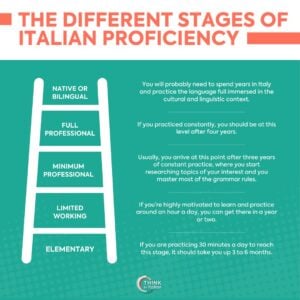What does mettersi mean in Italian?
Mettersi is the reflexive form of mettere (to put), and it can be used combined with the Italian preposition a.
First of all, let’s see the conjugation of mettersi in the presente, futuro semplice and passato prossimo:
| Presente | |
|---|---|
| io | mi metto |
| tu | ti metti |
| lui / lei | si mette |
| noi | ci mettiamo |
| voi | vi mettete |
| loro, Loro | si mettono |
| Futuro semplice | |
|---|---|
| io | mi metterò |
| tu | ti metterai |
| lui / lei | si metterà |
| noi | ci metteremo |
| voi | vi metterete |
| loro, Loro | si metteranno |
| Passato prossimo | |
|---|---|
| io | mi sono messo/a |
| tu | ti sei messo/a |
| lui / lei | si è messo/a |
| noi | ci siamo messi/e |
| voi | vi siete messi/e |
| loro, Loro | si sono messi/e |
How to use mettersi a + verb?
Simply put, mettersi a + verb means to start doing something.
Have a look at the examples below:
Appena l’ho visto mi sono messa a piangere.
As soon as I saw him I started crying.
Carlo finalmente si è messo a studiare sul serio.
Carlo finally started studying seriously.
Sono sicura che si metterà a ridere quando mi vede.
I am sure she’ll start laughing when she sees me.
As you can see from the examples above, we can use mettersi a in all tenses followed by a verb in the infinitive mood.
This construction is colloquial and quite common when talking to your family and friends in Italian.
What are some common expressions with mettersi?
Mettersi a piovere
This construction (mettersi a + infinitive verb) is also often used to talk about the weather, especially with regard to precipitations.
You will often find it with the verbs piovere (to rain) and nevicare (to snow).
In this case, it is said in its impersonal form.
Have a look at the examples below:
Volevamo andare al parco ma si è messo a piovere.
We wanted to go to the park, but it started raining.
Si è messo a nevicare appena sono arrivata e non ha ancora smesso!
It started snowing when I arrived, and it hasn’t stopped yet!
Mettersi a dieta
Apart from the construction mettersi a + infinitive verb, there are some set expressions in Italian that use the same verb.
The most widely used is mettersi a dieta (to start a diet). As you can see here, we do not need to use a verb in the infinitive mood, but we simply add the noun dieta (diet) after the preposition a.
Da domani mio marito si mette a dieta.
My husband will start to diet tomorrow.
Ma davvero vi siete messi a dieta?
Did you really start a diet?




















2 Responses
Per il esempio “da domani mio marito si mette a domani”, e’ meglio dire ” da domani mio marito si metterà a domani”, perché e’ nel futuro?
Ciao @mikeg85295@gmail.com!
The Italian expression mettersi a can be used in all tenses and is followed by an infinitive verb.
In particular, for the set expression mettersi a dieta it’s not necessary to use a verb in the infinitive mood but to just add the noun dieta after the preposition a.
Please let us know if you have any other questions or doubts.